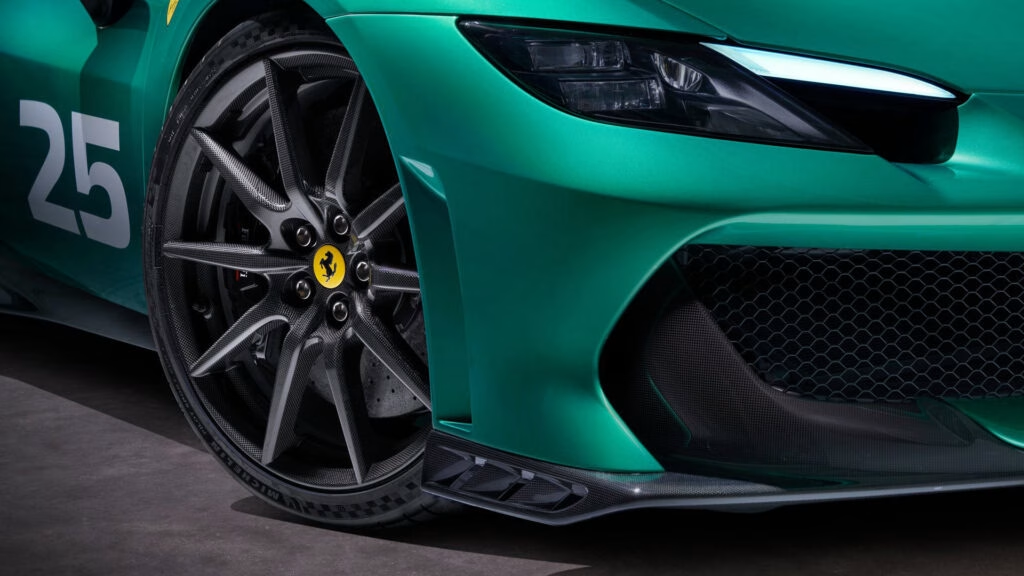How is Ferrari Tackling the Dreaded Splitter Scrape Problem?
If you’ve ever driven a low-slung supercar—or even just admired one from the sidewalk—you know the anxiety that comes with steep driveways and speed bumps. That front splitter, designed for maximum downforce and track-day bragging rights, is also a magnet for scrapes and cracks. Ferrari, never one to shy away from a challenge, has filed a patent that could change the way drivers protect their prized machines from everyday hazards.
What Makes Ferrari’s Patent Different from Existing Systems?
Most high-end sports cars already offer axle lift systems. These let you raise the nose at the press of a button, giving you a fighting chance against the world’s most poorly designed parking garages. Some brands, like Porsche and Chevrolet, have even taken it a step further by pairing lift systems with GPS memory. The car remembers tricky spots and lifts itself automatically next time you roll through.
Ferrari’s approach? It’s not just about going up—it’s about knowing when to stop. Their patent describes a system that uses sensors to detect the height of obstacles relative to the car’s ride height, not just their distance. If the system decides an object is too tall for the car to clear, it warns the driver. Ignore the warning, and the car will brake itself before disaster strikes. No more “I thought I had enough clearance” moments.
How Does This Auto-Braking System Actually Work?
Here’s where it gets clever. Instead of relying on the car’s speedometer, Ferrari’s system measures the distance between two points and calculates speed in real time. This allows for more precise, situation-specific responses. The patent also mentions the possibility of pushing notifications to your phone or infotainment screen—so you’re always in the loop, even if you’re distracted by the latest podcast or playlist.
This isn’t just about hardware. Ferrari seems to be thinking ahead, potentially covering their bases so competitors can’t patent similar tech. It’s a subtle chess move in the world of automotive innovation.
Are There Real-World Benefits for Supercar Owners?
Absolutely. Anyone who’s shelled out thousands for a carbon-fiber splitter knows the pain of a single misjudged curb. Repairs aren’t just expensive—they’re a blow to the ego. By proactively stopping the car before damage occurs, Ferrari’s system could save owners a small fortune (and a lot of embarrassment).
There’s also a weight-saving angle. Some drivers skip axle lifters to keep their cars as light as possible. For them, an auto-braking system could be the perfect compromise: protection without extra hardware.
What Are the Limitations or Potential Drawbacks?
Let’s not get ahead of ourselves—this is still just a patent. There’s no guarantee it’ll make it to production. Even if it does, some drivers might find the idea of their car braking for them a little unnerving. There’s also the question of false positives—will the system stop you for a stray leaf or a harmless puddle? Only real-world testing will tell.
It’s worth noting that combining this tech with existing GPS-based lift systems could offer the best of both worlds. Imagine a car that not only lifts itself at known trouble spots but also actively prevents you from making a costly mistake in unfamiliar territory.
How Does This Fit into the Broader Trend of Smart Car Tech?
Ferrari’s patent is part of a larger movement toward smarter, more proactive driver aids. According to a 2023 report from McKinsey & Company, advanced driver-assistance systems (ADAS) are expected to become standard in over 70% of new vehicles by 2027. While most ADAS features focus on safety, luxury brands are increasingly using them to protect the car itself—think parking sensors, surround-view cameras, and now, auto-braking for splitters.
Experts like Dr. Lisa Nguyen, an automotive technology researcher at the University of Stuttgart, point out that these systems not only reduce repair costs but also enhance the ownership experience. “For supercar owners, preserving the integrity of the vehicle is as important as performance. Innovations like Ferrari’s patent show that manufacturers are listening to their customers’ real-world concerns,” she notes.
What Should Supercar Enthusiasts Watch For Next?
Patents don’t always mean production, but they do signal where the industry is headed. As cars get faster and more specialized, the need for smarter protection grows. Whether you’re a Ferrari loyalist or just a fan of clever engineering, it’s worth keeping an eye on how these technologies evolve.
The big takeaway? Protecting your supercar’s splitter isn’t about perfection—it’s about smarter adjustments. Start with one change this week, and you’ll likely spot the difference by month’s end.

